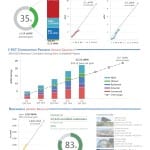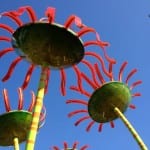Seattle City (spot)Light: Seema Ghosh
Power Systems Engineer Seema Ghosh shares what sparked her engineering career and the drive behind her work.

Power Systems Engineer Seema Ghosh shares what sparked her engineering career and the drive behind her work.

In 2017 and 2018, Seattle City Light’s Green Up program will provide $1,000,000 in grants to support renewable energy projects and education programs at schools, public institutions and nonprofit organizations.
Seattle City Light General Manager & CEO Larry Weis stated the utility’s intention to prepare to join the Energy Imbalance Market managed by the California Independent System Operator (ISO) beginning in April 2019.
Seattle City Light has been named a 2016 Environmental Champion by Cogent Reports.
Rapid growth in the installation of solar energy systems is pushing Seattle City Light to the state-imposed cap for solar production incentives.
Today, Seattle City Light Interim General Manager and CEO Jim Baggs issued a statement in support of President Obama’s new Clean Power Plan after the U.S. Environmental Agency (EPA) released final regulations that will, for the first time, set federal carbon emission limits for existing power plants.

Seattle City Light is on track to meet the energy conservation and renewable energy requirements of the Washington Energy Independence Act, which was approved by voters as Initiative 937.

Sonic Bloom, a solar powered artwork commissioned by Seattle City Light that delights visitors to Pacific Science Center has inspired the Seoul Municipal Government in South Korea to install musical streetlights.
From January to October 2014, Seattle City Light’s Green Up participants added 80,760 megawatt-hours of clean, green energy to our region’s power grid, avoiding the release of 108 million pounds of carbon dioxide into the atmosphere. That’s the equivalent of planting 1,258,873 tree seedlings or taking 10,337 cars off Seattle’s streets.

Seattle City Light’s Community Solar at Phinney Ridge project is sold out, but customers who want their own piece of solar energy can still buy units at the new Community Solar Capitol Hill project.